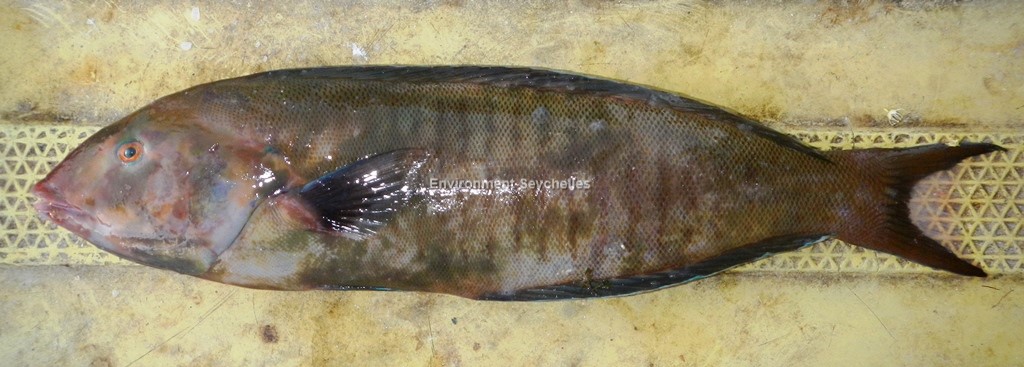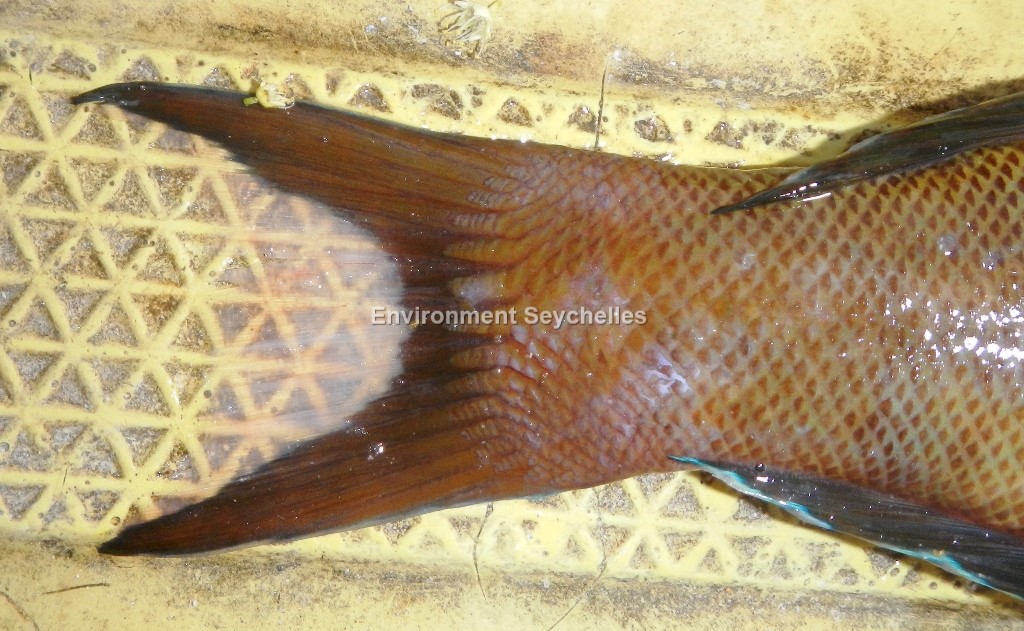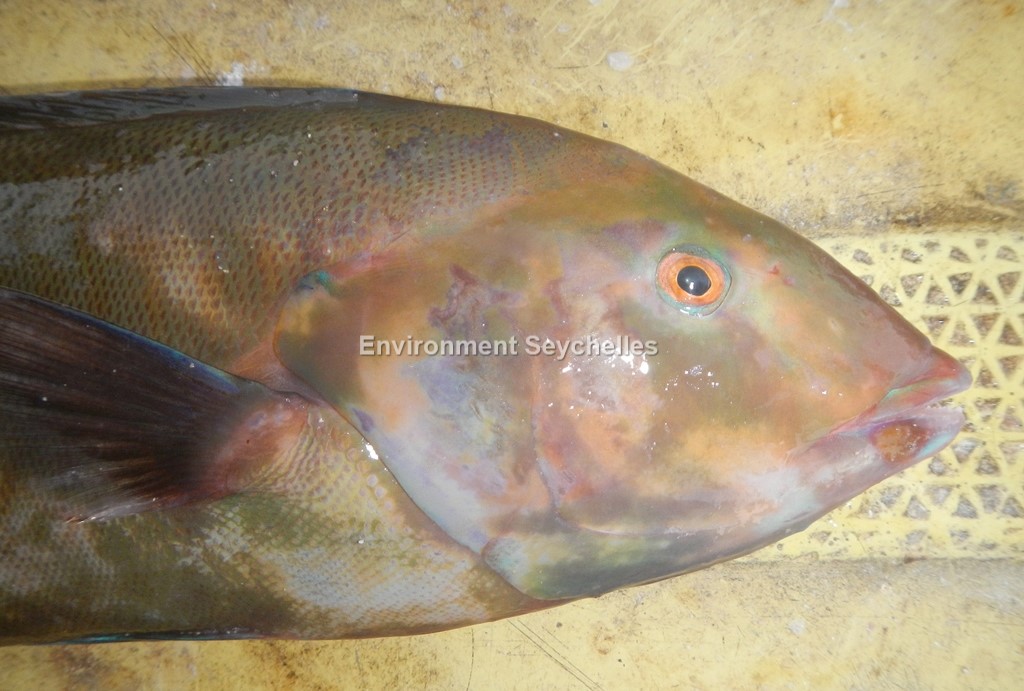Description:
Dorsal spines: 9; Dorsal rays: 12; Anal spines: 3; Anal rays: 12.
Elongate and compressed wrasse. 2 pairs of anterior canines. Caudal fin emarginate (slightly rounded in juveniles).
Colour. Initial phase (pictured above) brown to olive brown with 17-19 dark brown bars, a blue and black spot on opercular membrane. Dark spot on side of lips (spot larger
on lower lip). Caudal fin with a large whitish crescent posteriorly.
Terminal males. Body green shading to bluish-green ventrally. Numerous bluish-red bars on flanks, and often with a pale yellowish bar on body above origin of anal fin.
Head light purplish with green to blue-green bands radiating from eye, one forward onto snout expanding broadly and branching.
Juvenile pale body and head and broad dark stripe from posterior of operculum through caudal fin.
Size:
Maturity: Lm unknown. Range unknown. Max Length: 40cm TL.
Habitat and Ecology:
Inhabits coral reefs in areas of sand and rubble of clear lagoon and seaward reef slopes (Depth 3-30m). Mainly feeds on fish and crustaceans to a lesser extent. Juveniles
remain near bottom, adults are benthopelagic. Pelagic spawner.
Fishery Status:
This species is not protected or subject to fishery regulations. It is caught in the fish trap and hand line fisheries, but is a very rare component of the catch.
Notes:
References:
Fishes of Australia. Hologymnosus annulatus, http://136.154.202.208/home/species/246 (22/03/20).
Froese, R. & D. Pauly. (Eds.) (2019). FishBase. https://www.fishbase.se/summary/5637 (05/06/19).
Yeeting, B. (2010). Hologymnosus annulatus. The IUCN Red List 2010: https://dx.doi.org/10.2305/IUCN.UK.2010-4.RLTS.T187698A8604779.en. (22/03/20).
Citation:
Nevill, J.E.G. (2019). Hologymnosus annulatus, Ring wrasse. Seychelles Seatizens. www.seatizens.sc. https://seatizens.sc/species/hologymnosus-annulatus-lacepede-1801/ (edited 12/07/22).




There are no comments